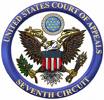
It has been widely recognized for years that federal sentences for the crack version of cocaine are unjustifiably harsh relative to sentences for the powder version. As far back as 1995, the United States Sentencing Commission — a body not generally known for its lenience — called for equalization between crack and powder sentences. However, progress in softening the so-called 100:1 crack-powder disparity has proceeded at a glacial pace. In 2007, the Commission finally succeeded in reducing (but not eliminating) the disparity as it exists in § 2D1.1 of the sentencing guidelines, but statutory disparities will require congressional action to correct. Fortunately, a bipartisan House bill cleared subcommittee last week, and the prospects for legislative reform appear unusually strong this term.
As reformers have argued their case in the Commission and Congress, the 100:1 disparity has collided with the Supreme Court’s reinvigorated Sixth Amendment jurispudence. In light of constitutional concerns, the Court transformed the sentencing guidelines from mandatory to advisory in 2005. Then, in 2007, the Court affirmed what should have been obvious (but had been rejected by the Seventh Circuit and other intermediate courts of appeals): the crack-powder disparity contained in § 2D1.1 is no more binding on sentencing judges than any other aspect of the guidelines.
But the Seventh Circuit remains resistant to the new world of advisory guidelines. The 100:1 ratio still lives on in § 4B1.1, the career offender guideline. And, in United States v. Harris, 536 F.3d 798 (7th Cir. 2008), the Seventh Circuit held that district court judges still may not act to correct or soften the crack-powder disparity when sentencing career offenders. The court reasoned that the disparity in § 4B1.1 was congressionally mandated, while the disparity in § 2D1.1 was not.
Last week, though, the Seventh Circuit limited the reach of Harris in United States v. Knox (Nos. 06-4101, 06-4376 & 07-1813) (Tinder, J.).
In Knox, the court held that the crack-powder disparity is not binding on crack offenders convicted of just conspiracy to distribute crack, as opposed to distribution or possession with intent to distribute. Although conspirators are covered by § 4B1.1, the Commission went beyond what was congressionally mandated in this regard. Since application of the crack-powder disparity to conspirators is only the Commission’s policy choice, and not Congress’s, it is not binding on sentencing judges.
It strikes me as a bit odd to distinguish between defendants convicted of conspiracy to distribute and defendants convicted of possession with intent to distribute, but I am happy to see further chipping away at the unjust crack-powder disparity. Better still would be a reversal of Harris. The basic point of the relevant Supreme Court jurisprudence is that the sentencing guidelines are now advisory. Period. It should not matter whether a particular provision of the guidelines was mandated by Congress or not — the whole package is nonbinding.
Other new criminal cases this past week were:
United States v. Hensley (No. 08-1204) (Manion, J.) (affirming conviction and sentence in solicitation of minor case).
United States v. McNeil (No. 08-1772) (Cudahy, J.) (finding plain error when sentencing court did not supplement presentence investigation report with information regarding status of state sentences).
United States v. Carter (No. 09-1608) (Flaum, J.) (finding that evidence was improperly suppressed by district court; underlying search was illegal, but connection to suppressed evidence too attenuated).
United States v. Alexander (No. 07-3718) (Tinder, J.) (holding that motion to suppress was properly denied by district court).
United States v. Alviar (Nos. 07-2333, 07-2336, 07-2366 & 07-2385) (Flaum, J.) (affirming convictions and sentences of multiple defendants in drug trafficking case).
United States v. Polak (No. 08-3381) (Williams, J.) (upholding appellate waiver’s validity notwithstanding Rule 11 error in acceptance of guilty plea).
